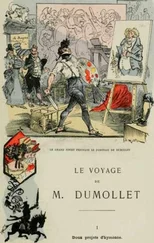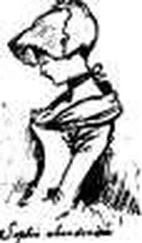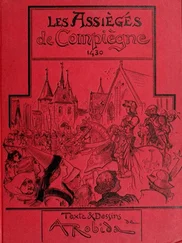Albert Robida - Yester-year; ten centuries of toilette from the French of A. Robida
Здесь есть возможность читать онлайн «Albert Robida - Yester-year; ten centuries of toilette from the French of A. Robida» весь текст электронной книги совершенно бесплатно (целиком полную версию без сокращений). В некоторых случаях можно слушать аудио, скачать через торрент в формате fb2 и присутствует краткое содержание. Жанр: Старинная литература, на английском языке. Описание произведения, (предисловие) а так же отзывы посетителей доступны на портале библиотеки ЛибКат.
- Название:Yester-year; ten centuries of toilette from the French of A. Robida
- Автор:
- Жанр:
- Год:неизвестен
- ISBN:нет данных
- Рейтинг книги:4 / 5. Голосов: 1
-
Избранное:Добавить в избранное
- Отзывы:
-
Ваша оценка:
- 80
- 1
- 2
- 3
- 4
- 5
Yester-year; ten centuries of toilette from the French of A. Robida: краткое содержание, описание и аннотация
Предлагаем к чтению аннотацию, описание, краткое содержание или предисловие (зависит от того, что написал сам автор книги «Yester-year; ten centuries of toilette from the French of A. Robida»). Если вы не нашли необходимую информацию о книге — напишите в комментариях, мы постараемся отыскать её.
Yester-year; ten centuries of toilette from the French of A. Robida — читать онлайн бесплатно полную книгу (весь текст) целиком
Ниже представлен текст книги, разбитый по страницам. Система сохранения места последней прочитанной страницы, позволяет с удобством читать онлайн бесплатно книгу «Yester-year; ten centuries of toilette from the French of A. Robida», без необходимости каждый раз заново искать на чём Вы остановились. Поставьте закладку, и сможете в любой момент перейти на страницу, на которой закончили чтение.
Интервал:
Закладка:
It must be boldly acknowledged that two thousand years ago, in this very Paris, which bears the standard of elegance, and triumphantly flaunts it everywhere, the predecessors of our Parisian ladies walked in the vast dark forest that stretched from the banks of the Seine to those of the Oise, and along the borders of the Ardennes, in one vast and tangled ''Bois de Boulogne," clothed in a style which closely resembles that of the Maori belles of to-day.
Those rough and handsome Gaulish dames were daubed with paint, and probably tatooed ; at all events, that they dyed their hair is certain.
The ornaments which have been discovered, fibulœ, torques, necklaces, bracelets, clasps in bronze and occasionally in silver or gold, afford evidence that those primitive semi-savages were accustomed to a certain kind of luxury. There is a great analogy between their style of ornamentation, and that which prevails in Brittany at the present day.
Ancient Gaul Gaul of the Barbarians, having become Roman Gaul, the Gaulish women, in imitation of tlie Roman, speedily exhibited a taste for all tho refinements of civilization and luxury. Ladies ! the corset dates from their time, but it was a corslet of thick stuff which moulded the form, rather than an instrument of torture which distorted its lines.
The primitive love of vivid colouring did not decline at once ; but actual paint became merely rougeing, and essences for preserving tlie complexion, and also false plaits, had already been invented. These locks, of a reddish-fair hue—the same colour has been in fashion for a long time past—were purchased from German peasant girls, the Gretchens of the time of Arminius.
The invasions of the Franks were followed by a return to barbarism and simplicity ; their women, who were big and strong, knew of no greater luxury in dress than a chemise strij)ed with purple.
Little by httle, tho Roman fashions, mingled with tlie Gaulish, the Frankish, and the Merovingian fashions, of which a few stiff and hieratic statues give us a notion, underwent a transformation.
The great Emperor Charlemagne, he of the flowing beard, in the midst of his Court, where the wives of his dukes and counts indulged the most unbridled taste for adornment, sumptuous stuffs and jewellery, observed a strict simplicity of attire for himself, as Frederick the Great and Napoleon did also. He was shocked by the growth of display and extravagance, and lie was the author of the first sumptuary laws, which were naturally observed only by the bourgeoises; those good ladies did not require prohibitions to dej)rive themselves of finery which they could not purchase for lack of money.
We may contemplate the people of those days in effigy in the tall hieratic figures sculptured under the porches of our most ancient churches. Rows of kings and queens, stiff and stern, set-in beneath the old archwnys, princes and princesses lying on raised stone slabs, old spectres of nulely carved stone, who shall tell us whom these really were, and what was that living and moving world over which they presided ?
They keep their secret,, it is hidden behind the mysterious brows of those sculptured phantoms, standing in the entrances of the buildings which they founded, or lying in the museums to which they have been consigned.
Our cities—trodden by the descendants of those ancestors, graceful French won)en, who crowd around the brilliant shops of the present day in which life is so intense—our own old cities were in existence then, but how often has their aspect changed ! Every vestige of those times has disappeared, their last stones are buried under the foundations of the oldest buildings now standing.
We know almost as little of the Avays of life at that period as we know of village civilization in the dolmen era, and we have to search in the earliest and most ancient poems or romances of chivalry, amid the clash of lance and battle-axe, for a few traces of its social history.
We come to the Middle Ages, when the
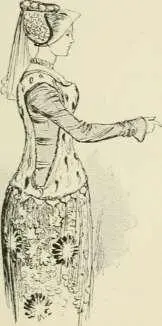
Siircoat with Garde-corps.
Byzantine influence of Rome, transplanted to the Bosphorus, at first prevailed in the clothing of both men and women, and was supreme about the time of the earliest Crusade. This was the period of long gowns with very close folds, of double girdles, one worn at tlie waist and one round the hips, and of transparent veils. It was in reality an age of transition. Fashion was groping about, turning backward, and resumino- forgotten forms with certain
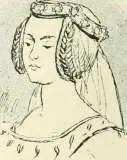
Ceremouial head-dress, 1-itli century.
alterations; the Roman costume, modified at first by Byzantium, rearranged and semi-orientalized, was partly restored.
Then suddenly, at the dawn of the thirteenth century, when a new era was emerging from the twilight of ancient barbarism, the new fashions declafcd tliciiisulves, i'raukly aiul plainly.
Tills was tlie actnal biitli of Fnaioli fashion, of costume purely French, like the ogival art in architecture that sprang from our soil, and discarded all that was imitated, or borrowed, in short every reminder of Rome and Byzantium.
The statuary, the stained glass, and the tapestry of the Middle Ages, will now supply us with the very best of documents. Those figures carved in full dress upon their tombs, an actual resuscitation of the noble chatelaines of the period, are extremely remarkable portraits, with all the details of attire, the garments, and the head-dress clearly indicated, and in some instances still bearing traces of painting which give us the colours of the costume.
The stained glass is still more interesting, for it represents all classes of society, from the noble lady to the woman of the people; in memorial windows, in the windows of seigneurial chapels, or the chapels of city corporations, in the great compositions with portraits of the donors beneath the storied windows, the noble dames in rich attire kneeling opposite to the good knights in armour, the ricli 'city madams' opposite to the worthy aldermen or 'notables' their spouses.
Tapestries are not entirely trustworthy as veritable records, for the artist sometimes introduces decorative fancies into his compositions ; nevertheless, we find many figures in them which afford precise indications, corroborate the testimony of the statuary and the glass, and may be added to the innumerable and marvellous illustrations of the manuscripts of the time.
Above the under-dress, the petticoat, or 'cotta,' the women of the eleventh century wore the ' bliaud ' or ' bliaut,' an ornamented robe of fine stuff, held in to the figure by a girdle. The 'bliaud,' which was at first made of merely goffered stuff, was soon enriched with designs atid ornaments in very good style.
Th.e transformations of the 'bliaud ' and the ' cotta ' are endless. The under-dress became the
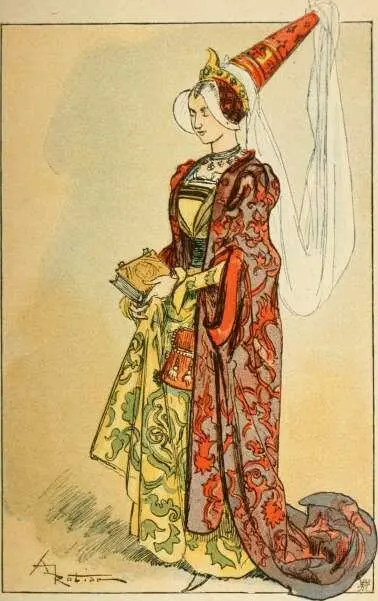
ROl'.i; F.T lIOUPPHLAXDr- HISTOID l-RS XV^' siHc;[.n.
' cotte hardie,' and the ' bliaud ' was supplanted by the surcoat. This under-dress, which fitted very tightly, was laced in front and at the back, and showed the outlines and shape of the body.
In the full-dress costume a ' garde-corps,' or bodice-front of fur, was added to the surcoat and lent it additional richness. The general form, however, was subject to a number of particular arrangements, cottas and surcoats varied in all manner of ways, following the fashion of the day, the taste of individuals, and the mode in the provinces, or in the small princely or ducal courts, which were isolated by circumstances or situation.
Читать дальшеИнтервал:
Закладка:
Похожие книги на «Yester-year; ten centuries of toilette from the French of A. Robida»
Представляем Вашему вниманию похожие книги на «Yester-year; ten centuries of toilette from the French of A. Robida» списком для выбора. Мы отобрали схожую по названию и смыслу литературу в надежде предоставить читателям больше вариантов отыскать новые, интересные, ещё непрочитанные произведения.
Обсуждение, отзывы о книге «Yester-year; ten centuries of toilette from the French of A. Robida» и просто собственные мнения читателей. Оставьте ваши комментарии, напишите, что Вы думаете о произведении, его смысле или главных героях. Укажите что конкретно понравилось, а что нет, и почему Вы так считаете.

